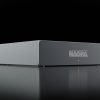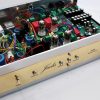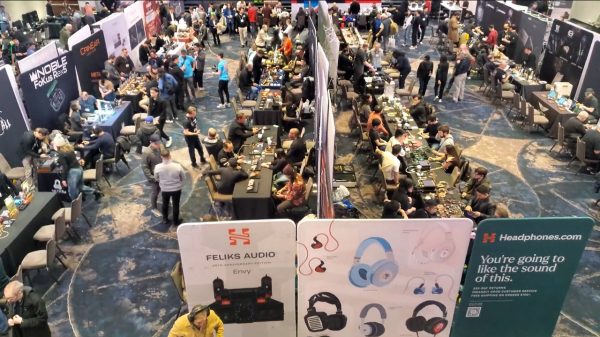Synergy is everything. One can not throw just anything in a pan and expect something edible.
Sitting alone in a very quiet cafe in Jerusalem over Thanksgiving, I found myself fixated on the ingredients in my Shakshuka.
Every last ingredient cooked together had a distinct impact on the overall flavour and taste.


The synergistic blend of poached eggs, olive oil, onion, garlic, cumin, smoked paprika, red peppers, thyme, and tomatoes slowly cooked and creating something that defied the chaos of the moment; both inside the pan and all across Israel at that exact moment.
The same applies to hi-fi components and loudspeakers.
Price guarantees nothing. Not culinary or listening satisfaction.
Most of the six-figure systems that I listened to at CAF 2023 were not very good.
They were giant mountains of excess designed to shock listeners into submission, but the truth is that none of them offered a great deal of synergy.
When it comes to assembling a hi-fi system that will satisfy you for the long-term; a concept that is admittedly difficult for a specific percentage of audiophiles that suffer from gear fetishism — focus on synergy.

If certainly helps when you can find a key ingredient as fulfilling as the Cambridge Audio Evo 150 Network Amplifier to build around.
Paying homage to its iconic P40 Integrated Amplifier that helped launch the brand in 1968, Cambridge Audio introduced the new Cambridge Audio Evo 75 and Evo 150 Network Amplifiers in 2021; my review of the Evo 150 will be published next week and it has proven to be one of the best hi-fi components that we have reviewed in recent memory.
What’s clear from the spec sheet is that Cambridge Audio designed the Evo series to knock Naim off its rather comfortable perch. The Uniti range have sat on the streaming throne for a number of years — but all of that certainly changed with the Evo 150.
Both models are Roon-Ready and support TIDAL Connect, and MQA hi-res digital streaming.
The Cambridge Audio Evo 150 features a built-in MM phono preamp which was not included in the Edge A or CXA61 Integrated Amplifiers; it’s good to see Cambridge Audio listening to consumers and reviewers (ahem) in this regard.
The brand already makes some excellent external phono preamps so it only makes sense that they would include them in the Evo range.
Designed in Cambridge Audio’s London studio, Evo’s minimal and timeless aesthetic will fit into any interior and lifestyle. Lead designer Ged Martin chose premium materials and used industrial design principles to create a product that champions simplicity and will endure for many years.

Taking inspiration from the wood trims of the iconic P40, Cambridge Audio’s first ever product from 1968, Evo has beautiful walnut wood side panels that complement the sleek, black anodized aluminum cabinet.
Evo also comes with a choice of formed black side panels made from Richlite — an innovative new material made primarily from recycled paper. The side panels can be switched out according to each customer’s style.
The rather elegant looking design also features a dual-concentric rotary dial and large 6.8in LCD display panel that shows off album artwork in full color.
Evo uses high quality components and is powered by a revolutionary Hypex NCore Class D amplification, which reproduces every detail in your music while remaining compact and energy efficient.
Evo comprises two models: Evo 150 is rated at 150 watts per channel, and Evo 75 has 75 watts per channel.

Cambridge were kind enough to also send us the Evo CD transport and Evo S loudspeakers which we reviewed in December.
You would be hard pressed to find something from one brand that offers this much flexibility, sound and build quality for its asking price.
$5,000 for all 3 components is excellent value for the money. Just add a turntable and you’re done.

As much as I enjoyed the Evo S loudspeakers — the Evo 150 is capable of driving something even better like the Q Acoustics 5040 Loudspeakers.
Why spend the extra money on the 5040?
The 5040 completely vanish in your room compared to the Evo S, which deliver a soundstage that is basically confined between the two loudspeakers.

The $1,500 floor-standing loudspeakers reproduce an extremely wide soundstage with very precise imaging and I would offer that it competes rather well against the Bowers & Wilkins 703 S3 in that regard; when you consider the huge price difference between the two loudspeakers — the 5040 come across as a genuine bargain.
The biggest knock against the 5040 is a tonal balance that is rather lean sounding with some amplifiers.
It needs the heartiness of the Evo 150 to complete the dish.
A combination of additional texture, greater control in the bass range, and a very smooth treble are necessary ingredients to make this system work and it does.
The Evo 150/Evo CD and 5040 complement each other so well that it would require something substantially better to suggest spending any additional amount of money at this point.

Tubes? Unison Research’s Simply 845 will likely sound superb with the 5040 but at $9,995 USD — way out of reach.
Turntable options are aplenty and the temptation to overspend here is rather large; the events of the day in Jerusalem almost pushed me into ordering a bottle of red wine at breakfast — and I’m not a drinker.
So what makes sense with this system?

Pro-Ject’s Debut PRO with the Sumiko Blue Point No. 3 (high output version) would be a synergistic match and one that can be upgraded over time with some accessories.
The entire system will run you $7,000 USD. Which is what some exhibitors were charging for their cables at CAF 2023.
A single pair of loudspeaker cables or power cord.
One is a great investment.
The other is likely to leave a very bad taste in your mouth.
Where to buy:
- Cambridge Evo 150 – $2,999 at Amazon | Crutchfield
- Q Acoustics 5040 – $1,499/pair at Amazon | Crutchfield
- Cambridge Audio Evo CD –
$1,199$999 at Amazon | Crutchfield
- Pro-Ject Debut Pro – $999 at Amazon | Crutchfield
- Sumiko Blue Point No. 3 (High Output) – $499 at Amazon | Crutchfield









































Kevin
January 4, 2024 at 11:07 pm
Mr. White-
Thank you for your professional, hands on, down to earth approach to your articles. I am in my 60s and building a system ( and loving getting back into it after all my gear was stolen decades ago ). I was gifted the CXN v2 to go along with my Wharfedale Diamond 225s and I find it bright. I love a warm rich sound. Do you feel the EVO 150 would have a similar sound signature ? I am considering going with a Bluesound node for the time being ( less expensive) as I know the digital tech changes so rapidly and the CXN v2 has been out for so long it may be shelved soon. I am also considering the Wharfedale Lintons eventually as well.
Thank you sir
Kevin
Ian White
January 4, 2024 at 11:47 pm
Kevin,
It’s a great match for any loudspeaker that is thinner sounding. The Q Acoustics 5040 offers a more neutral sounding presentation than their other loudspeakers and the Evo 150 has proven to be ideal for it.
I also own Wharfedale loudspeakers and my only advice on the Lintons would be to try them first with the Evo 150 — it might be too much of a good thing because they are rather full sounding loudspeakers.
My Cambridge AXA35 is fantastic with my older Diamond 10.1s.
Appreciate the kind words.
Happy New Year!
Ian White
manu
January 5, 2024 at 2:39 pm
I just recently helped a friend purchase a pair of speakers which we were auditioning in a shop with the Evo 150. It is a great amp. We had tried two amps- Roksan Attessa and this. Hands down the Evo beats the RA.
The speakers we tried out were Vienna Acoustics Mozart Grand Symphony Edition, Dali Oberon 7 and Dali Opticon 8 MK 2. We started with the Opticon 8 and VA’s first selected the Opticons and then between the Oberon and Opticon chose the Oberons. All were blind tests. The fact that the Evo has option to have 2 speakers simultaneously really helped.